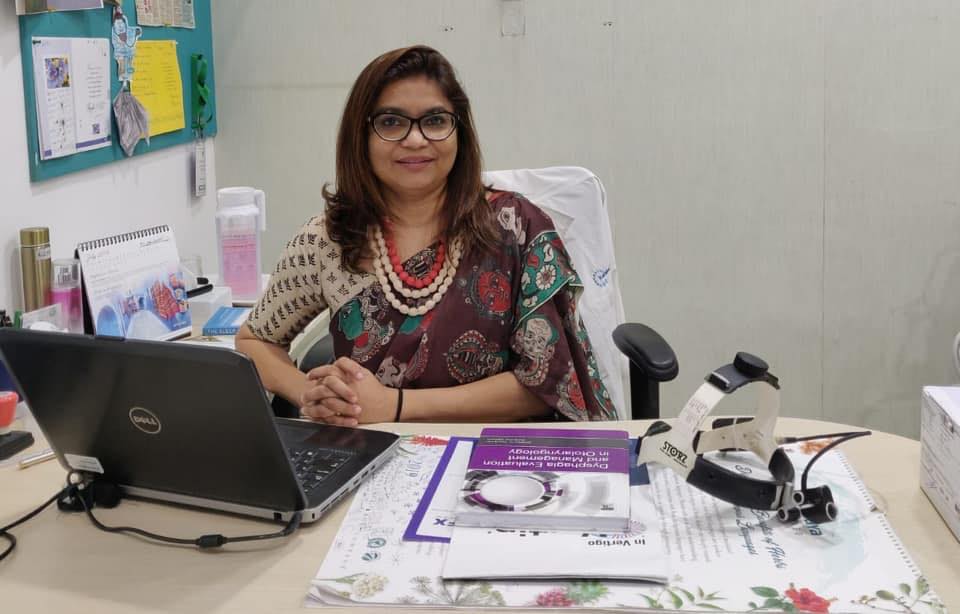
The rhythmic hum of the outpatient clinic at Kokilaben Dhirubhai Ambani Hospital and Medical Research Institute sets the tone for a place where medical precision meets compassion. It was here that I met Dr. Shama Kovale, one of Mumbai’s most respected ENT specialists, known for her expertise in Septoplasty surgery in Mumbai.
With more than two decades of experience in treating nasal and sinus conditions, Dr. Kovale has become a trusted name in ENT and head-neck surgery. During our conversation, I discovered not only the science behind septoplasty but also the human stories of patients who found relief from chronic nasal obstruction and sinus discomfort through this corrective procedure.
Dr. Shama Kovale – Expertise, Qualifications, and Vision
Dr. Shama Kovale completed her MBBS and MS (ENT) from one of India’s leading medical universities and received specialized training in Functional Endoscopic Sinus Surgery (FESS) and Septorhinoplasty. Over the past 20 years, she has managed complex ENT cases involving deviated septum, nasal blockages, sinusitis, and voice disorders.
At her department in Kokilaben Hospital, she works with advanced diagnostic tools like nasal endoscopy, CT-based sinus mapping, and 3D imaging to ensure precise surgical planning. Her operating suite is equipped with high-definition endoscopic systems and microdebriders, offering minimally invasive approaches and faster recovery for patients.
“Breathing well is fundamental to overall health,” she explained during our discussion. “When a deviated septum obstructs airflow, patients experience poor sleep, recurrent infections, and reduced energy. Septoplasty is a functional surgery that helps restore natural breathing, not just nasal structure.”
Understanding Septoplasty Surgery
Septoplasty is a corrective surgical procedure designed to straighten or reposition the deviated nasal septum—the thin wall dividing the two nostrils. When this septum is off-center, it can cause nasal congestion, sinus pressure, snoring, and difficulty in breathing.
Dr. Kovale outlined the procedure simply:
“Under local or general anesthesia, we realign or remove the deviated portion of cartilage and bone. The surgery takes about an hour, and most patients can go home the same day.”
Unlike cosmetic rhinoplasty, septoplasty primarily focuses on functional correction, though some patients may choose to combine the two for both health and aesthetic benefits.
Other Renowned Doctors in Septoplasty and ENT Surgery
Dr. Mohan Kameswaran and Dr. Milind V. Kirtane are notable figures who have advanced ENT and sinus surgery techniques. Their contributions to functional nasal surgery and auditory rehabilitation are widely respected.
Dr. Andrew Goldberg and Professor Valerie Lund are leaders in the field of endoscopic nasal and sinus surgeries. Their work underscores how precision tools and refined techniques are improving patient comfort and outcomes globally.
Pros and Cons of Septoplasty Surgery
Pros:
- Permanent relief from nasal blockage and breathing difficulty
- Improved sleep quality and reduced snoring
- Lower risk of sinus infections and headaches
- Enhanced sense of smell and overall energy levels
Cons:
- Temporary nasal congestion or mild bleeding post-surgery
- Swelling and discomfort for a few days
- Rare risks include infection or septal perforation
- Cosmetic changes, though uncommon, may occur if combined with rhinoplasty
Dr. Kovale emphasized the importance of realistic expectations:
“Septoplasty doesn’t alter facial appearance in most cases. It’s designed to correct a functional problem. Patients should understand that recovery takes time, but the benefits are long-lasting.”
Cost of Septoplasty Surgery
The cost of Septoplasty surgery in Mumbai typically ranges between ₹70,000 to ₹1,50,000, depending on the hospital, surgeon’s expertise, and anesthesia used. In premium setups like Kokilaben Hospital, where advanced equipment and post-operative care are standard, the cost may be on the higher end but offers exceptional safety and results.
Precautions and Aftercare – Expert Tips from Dr. Kovale
After surgery, Dr. Kovale’s aftercare protocol focuses on ensuring proper healing and minimizing complications:
- Avoid Blowing the Nose: For at least a week post-surgery to prevent bleeding.
- Use Saline Sprays: Keeps nasal passages moist and supports healing.
- Sleep Elevated: Reduces swelling and discomfort.
- Avoid Heavy Exercise: For two weeks to minimize pressure on the nose.
- Regular Follow-ups: To monitor recovery and ensure proper alignment.
She adds, “The success of septoplasty depends as much on postoperative care as the surgery itself. Following instructions diligently helps patients return to normal breathing quickly.”
A Journalist’s Reflection
Over years of reporting on medical advancements, I’ve come across many surgeons, but Dr. Shama Kovale’s calm expertise stood out. Her approach is both analytical and empathetic—balancing the technical finesse of surgery with patient reassurance.
What impressed me most was her belief that ENT surgery is not just about correcting anatomy, but about enhancing quality of life. She described how patients often express that the biggest reward after septoplasty is the simple joy of sleeping soundly and breathing freely again.
Final Thoughts
Septoplasty may appear minor in surgical scope, but its impact is transformative. For those struggling with chronic nasal blockage or sinus infections, consulting an experienced ENT specialist can be life-changing.
As Dr. Kovale summarized beautifully, “Good breathing is silent, effortless, and natural—when you regain that, it’s like rediscovering balance.”
For expert consultation, one may reach Kokilaben Dhirubhai Ambani Hospital and Medical Research Institute at +91 91528 50769.

